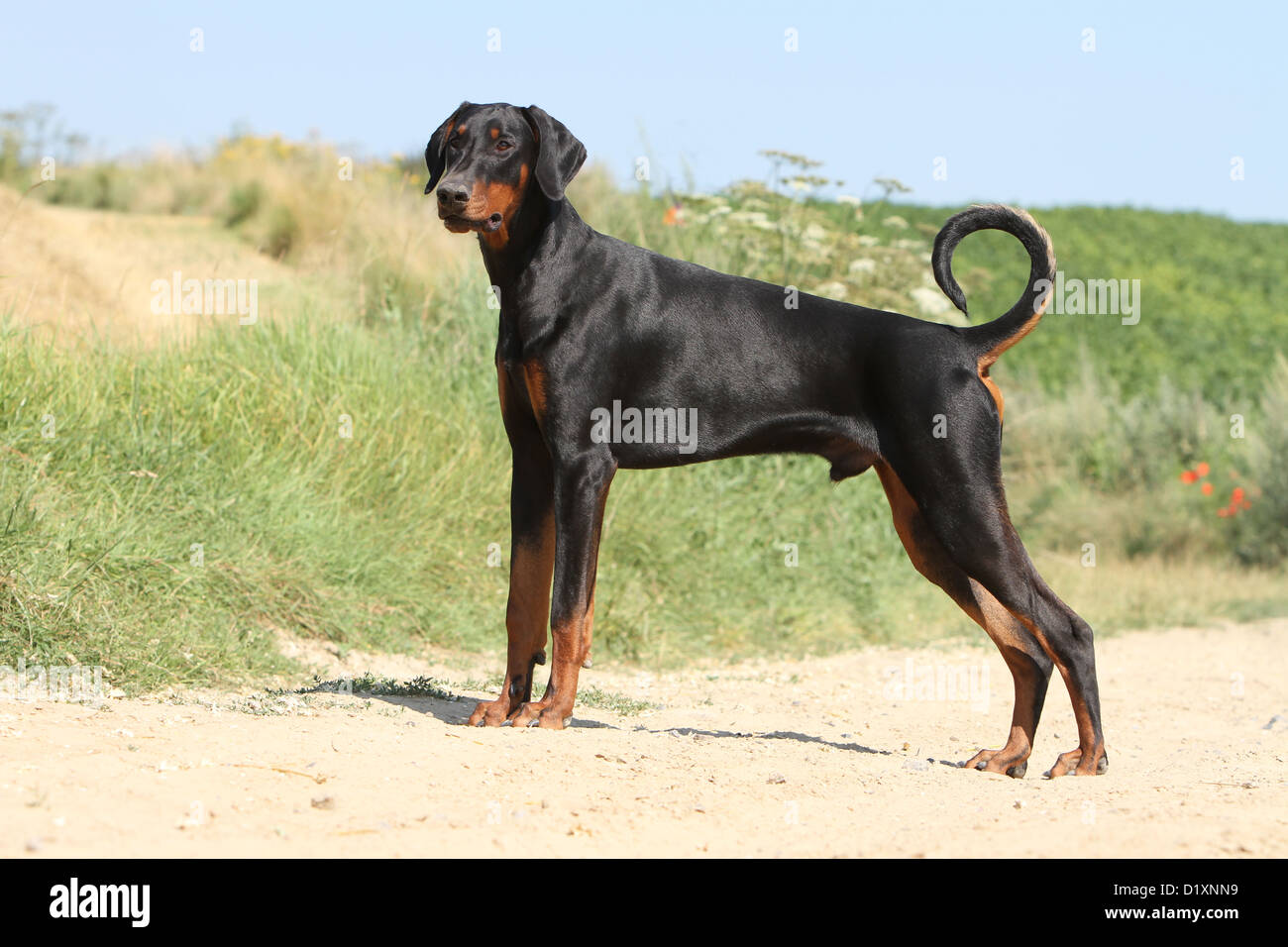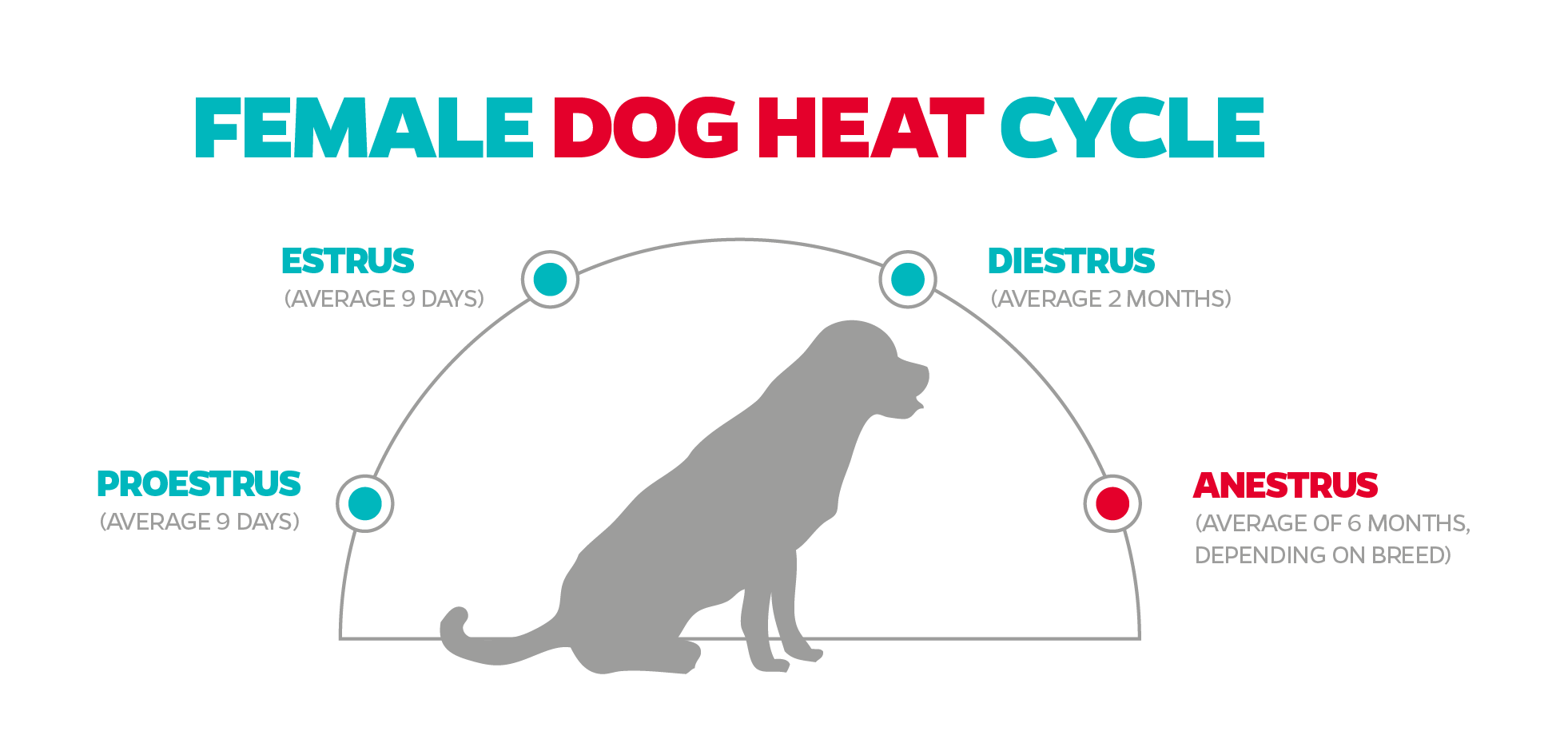Benign meibomian gland cyst or adenoma
Benign Meibomian Gland Cyst Or Adenoma. They tend to occur in older dogs and can affect any breed. In older dogs it is quite common for one gland to get a little overexcited and form a growth. Those that develop in the medulla are also called pheochromocytomas fee-o-kroe-moe-sy-TOE-muhs. The most common types of tumors appear as neoplasia of the Meibomian gland the primary oil producing glands located in the eyelid margin.
 Image Gallery Canine Eyelid Diseases Clinician S Brief From cliniciansbrief.com
Image Gallery Canine Eyelid Diseases Clinician S Brief From cliniciansbrief.com
Meibomian gland tumors are tiny slow-growing tumors that form in the meibomian glands of the eyelids. If these cells overmultiply they develop into benign tumors called meibomian gland adenomas non-cancerous or meibomian gland adenocarcinomas a less common malignant tumor. Histologically they are identical to pleomorphic adenoma of the lacrimal glands. They tend to become irritated and may bleed as they enlarge. Meibomian glands are tiny glands found on the eyelid margins of both the upper and lower eyelids of dogs and cats. Meibomian Gland Adenomas MGA are benign age related eyelid tumors which result from the accumulation of glandular material.
A bump on the lower eyelid could be a few different things.
Meibomian gland adenomas or cysts are sebaceous cysts on or around the eyelid. In older dogs it is quite common for one gland to get a little overexcited and form a growth. It is uncommon in other species. The tumors originate in the meibomian glands and although many grow rapidly and sometimes appear histologically malignant they are usually clinically benign. These tiny oil glands are a type of sebaceous glands. Meibomian gland adenoma and adenocarcinoma Figure 1 - Meibomian gland adenomas benign and adenocarcinoma malignant arise from specialized glands of the upper and lower eyelid.
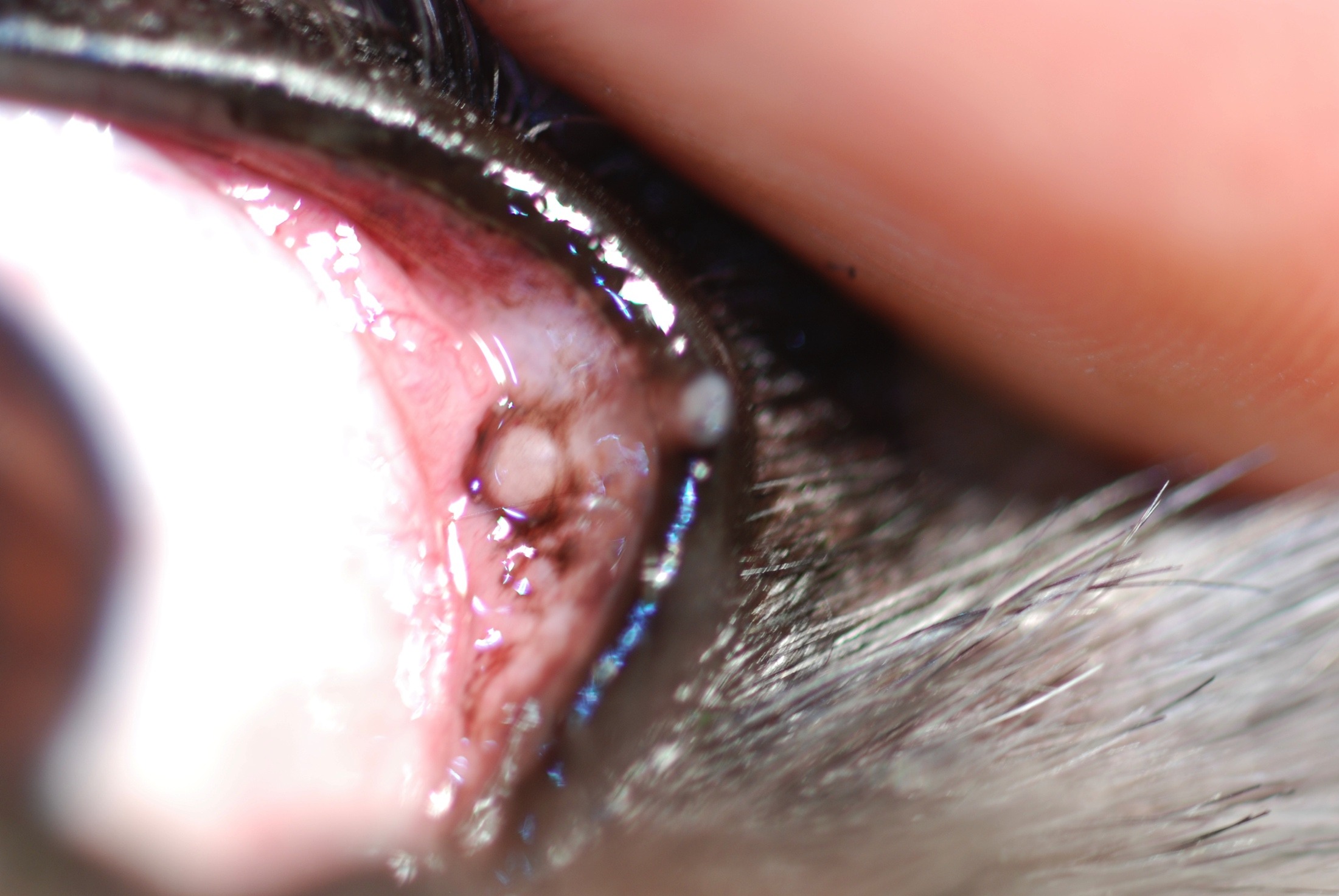 Source: mspca.org
Source: mspca.org
The tumors originate in the meibomian glands and although many grow rapidly and sometimes appear histologically malignant they are usually clinically benign. Masses arising from these glands are often seen protruding from the eyelid margin. These masses most commonly arise from the eyelid meibomian glands meibomian gland adenomas or adenocarcinomas or melanocytes melanomas although other cell origins are possible. Health Navigator says these are usually caused by blocked oil glands and they are not due to. These are common in older dogs and start as small bumps at the margin of the upper and lower eyelids.
 Source: eyespecialistsforanimals.com
Source: eyespecialistsforanimals.com
Meibomian gland adenoma and adenocarcinoma Figure 1 - Meibomian gland adenomas benign and adenocarcinoma malignant arise from specialized glands of the upper and lower eyelid. Health Navigator says these are usually caused by blocked oil glands and they are not due to. It is uncommon in other species. They originate in the meibomian gland or sebaceous glands of the eye. They tend to become irritated and may bleed as they enlarge.
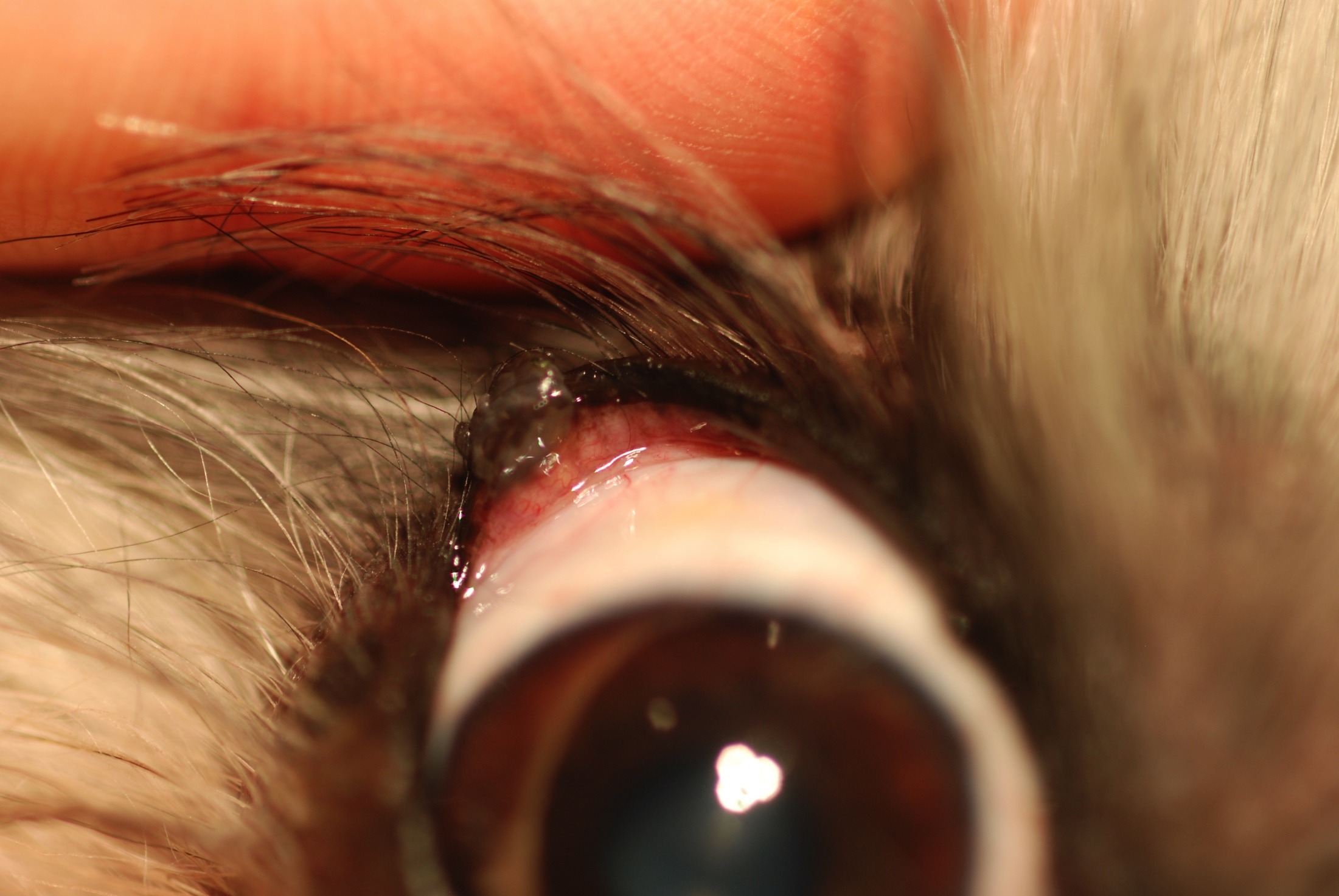 Source: mspca.org
Source: mspca.org
Meibomian Adenoma Meibomian Ductal Adenoma Meibomian Epithelioma Meibomian Carcinoma Description Meibomian glands are a special kind of sebaceous glands located on the periphery of the eyelid. Its a non-viral type of cutaneous wart. They do not generally invade adjacent tissues or metastasize but they can continue to grow and become deforming. Both dog and cat eyes may be affected by these but they are more common in dogs. If these cells overmultiply they develop into benign tumors called meibomian gland adenomas non-cancerous or meibomian gland adenocarcinomas a less common malignant tumor.
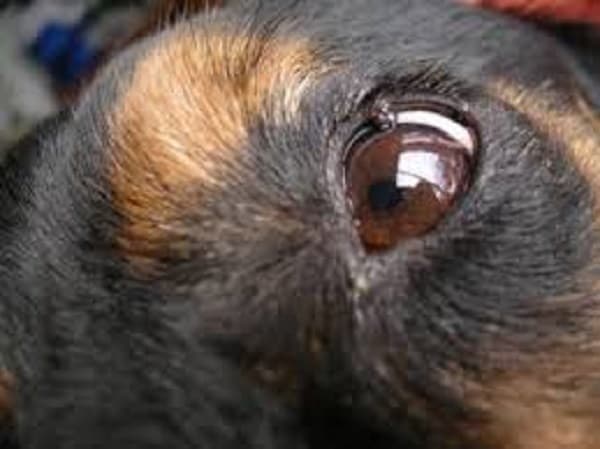 Source: urbananimalveterinary.com
Source: urbananimalveterinary.com
They arise from skin sweat glands and clinically appear as intradermal multilobulated mass. Meibomian adenoma is the most common eyelid tumor in dogs occurring most frequently after middle age. Types of benign salivary gland tumors. They are responsible for the supply of sebum which prevents the tear film from evaporating. Meibomian gland adenoma and adenocarcinoma Figure 1 - Meibomian gland adenomas benign and adenocarcinoma malignant arise from specialized glands of the upper and lower eyelid.
 Source: acvo.org
Source: acvo.org
Benign meibomian gland cysts in dogs are non-cancerous. Benign meibomian gland cysts in dogs are non-cancerous. They originate in the meibomian gland or sebaceous glands of the eye. This means that the dogs immune system. There are a variety of benign salivary gland tumors including.
 Source: ajo.com
Source: ajo.com
Its a non-viral type of cutaneous wart. The eyelids of dogs cats and people contain Meibomian glands. There are dozens of these glands in each eyelid and the origin of these tumors is usually either the duct linings epithelioma or the ascini adenoma that grow as multilobulated pink to grey well vascularized Figure 1. Meibomian glands are sebaceous glands that provide an oily secretion to stabilize the tear film over the cornea Common in older dogs meibomian gland tumors are usually benign but a small percentage of them are carcinomas that can metastasize into lymph nodes. These are common in older dogs and start as small bumps at the margin of the upper and lower eyelids.
 Source: cliniciansbrief.com
Source: cliniciansbrief.com
Meibomian gland adenoma and adenocarcinomaThese masses arise from Meibomian glands which are specialized glands that line the upper and lower eyelids. The majority of salivary gland tumors are benign meaning they are not cancers. They do not generally invade adjacent tissues or metastasize but they can continue to grow and become deforming. Health Navigator says these are usually caused by blocked oil glands and they are not due to. They are responsible for the supply of sebum which prevents the tear film from evaporating.
 Source: acvo.org
Source: acvo.org
They arise from skin sweat glands and clinically appear as intradermal multilobulated mass. Meibomian glands are sebaceous glands that provide an oily secretion to stabilize the tear film over the cornea Common in older dogs meibomian gland tumors are usually benign but a small percentage of them are carcinomas that can metastasize into lymph nodes. Meibomian glands secrete oily substances that help keep the tear film healthy. There are a variety of benign salivary gland tumors including. These tumors are often pink or gray with a lobulated appearance that grow along the eyelid margin.
 Source: aesculight.com
Source: aesculight.com
Each gland contains two tissue types. These masses most commonly arise from the eyelid meibomian glands meibomian gland adenomas or adenocarcinomas or melanocytes melanomas although other cell origins are possible. Meibomian glands are tiny glands found on the eyelid margins of both the upper and lower eyelids of dogs and cats. The edges of the eyelids for example have tiny glands called meibomian glands containing cells that produce secretions to lubricate the eye. Meibomian gland adenoma and adenocarcinomaThese masses arise from Meibomian glands which are specialized glands that line the upper and lower eyelids.
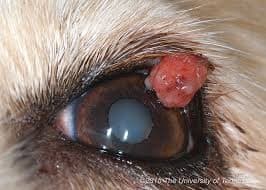 Source: urbananimalveterinary.com
Source: urbananimalveterinary.com
If you notice a growth on your dogs eyelid it could be whats known as a meibomian gland cyst or chalazion. These are common in older dogs and start as small bumps at the margin of the upper and lower eyelids. Its a non-viral type of cutaneous wart. Meibomian Gland Adenomas MGA are benign age related eyelid tumors which result from the accumulation of glandular material. Most benign adrenal tumors cause no symptoms and dont need treatment.
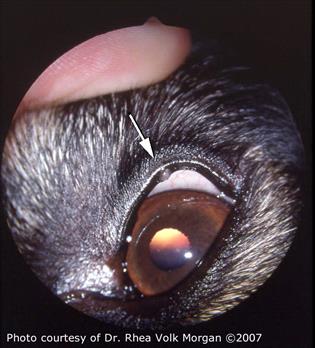
The cortex and the medulla. They originate in the meibomian gland or sebaceous glands of the eye. Meibomian Gland Adenomas MGA are benign age related eyelid tumors which result from the accumulation of glandular material. In older dogs it is quite common for one gland to get a little overexcited and form a growth. These tumors are often pink or gray with a lobulated appearance that grow along the eyelid margin.
 Source: acvo.org
Source: acvo.org
Tumors may originate from the Meibomian glands sebaceous or oil glands sweat glands and from other cells including those which produce melanin pigment mast cells and the covering epithelium. While these are technically benign in. Both dog and cat eyes may be affected by these but they are more common in dogs. Sometimes little bumps overgrowths of blocked oil from the Meibomian glands - form into tumors. Meibomian gland adenomas are most common.
If you find this site value, please support us by sharing this posts to your preference social media accounts like Facebook, Instagram and so on or you can also save this blog page with the title benign meibomian gland cyst or adenoma by using Ctrl + D for devices a laptop with a Windows operating system or Command + D for laptops with an Apple operating system. If you use a smartphone, you can also use the drawer menu of the browser you are using. Whether it’s a Windows, Mac, iOS or Android operating system, you will still be able to bookmark this website.




